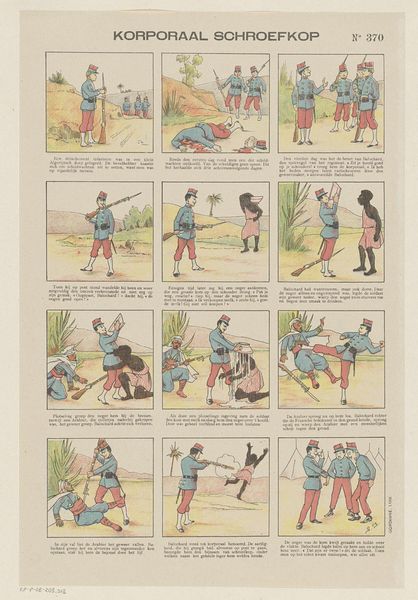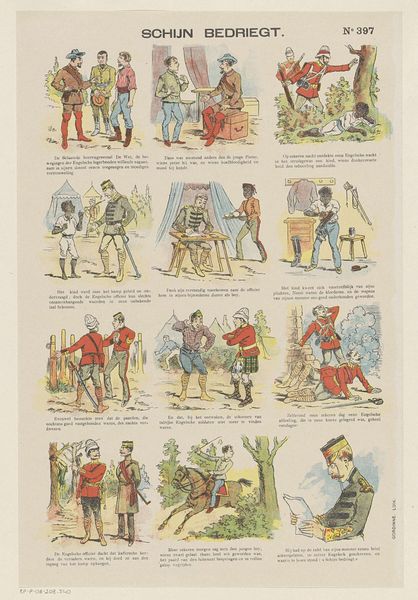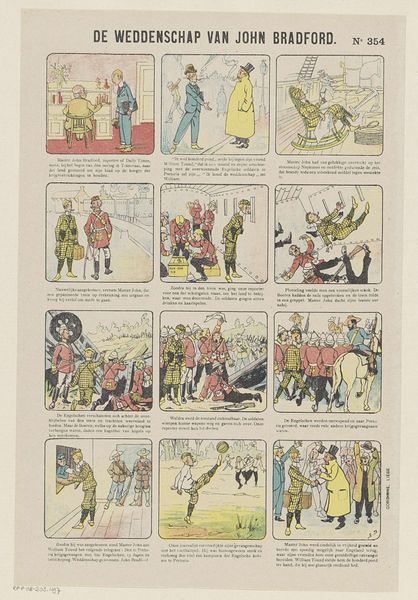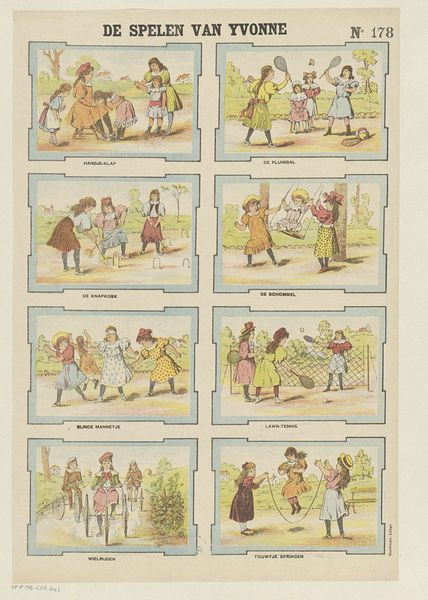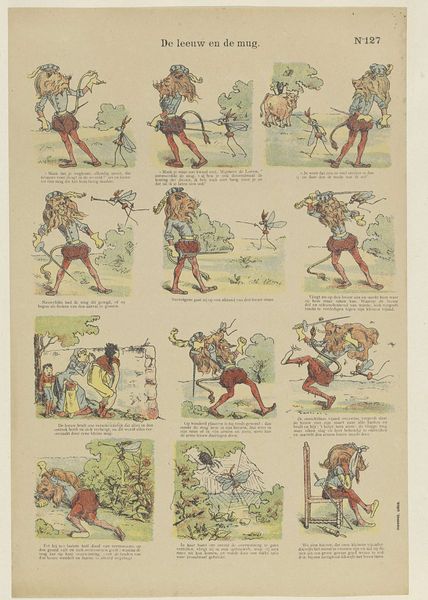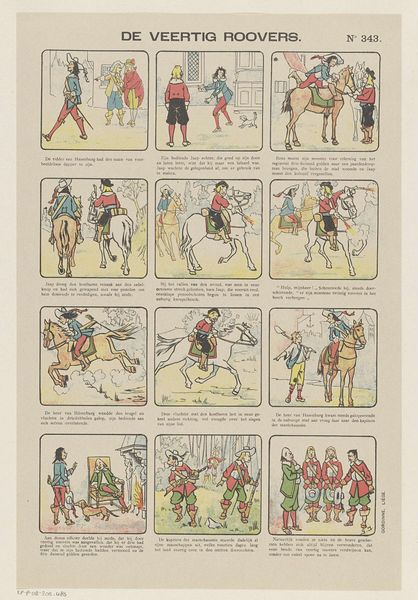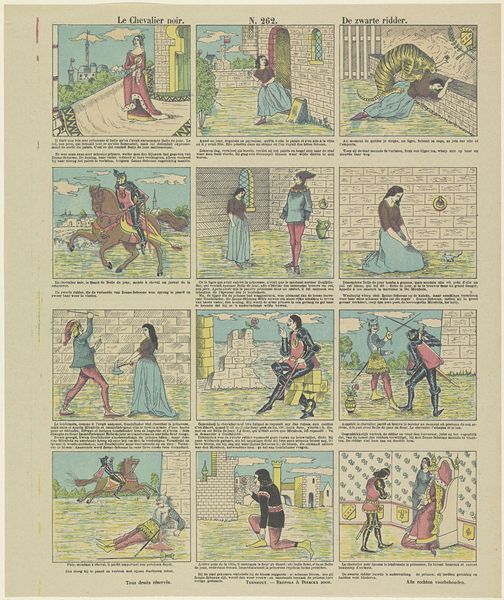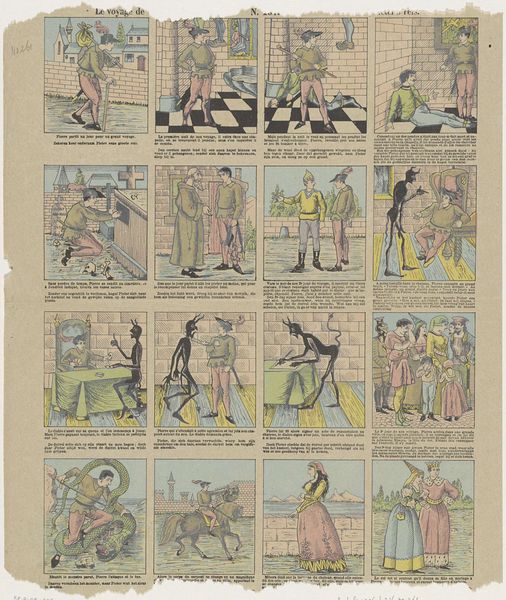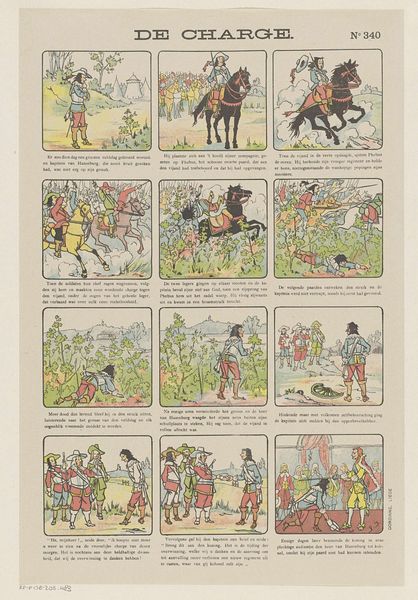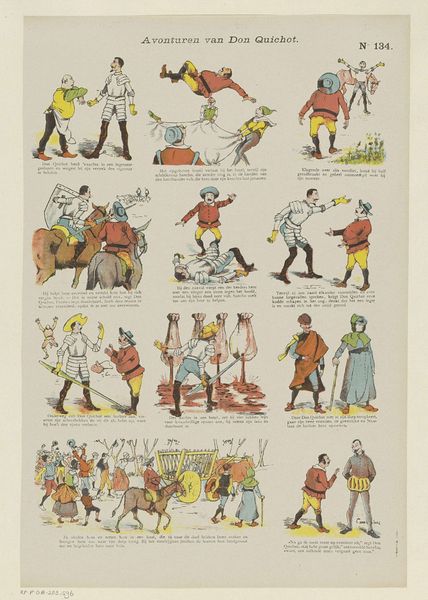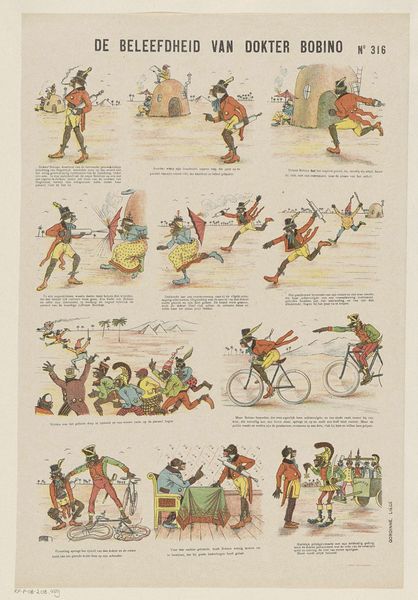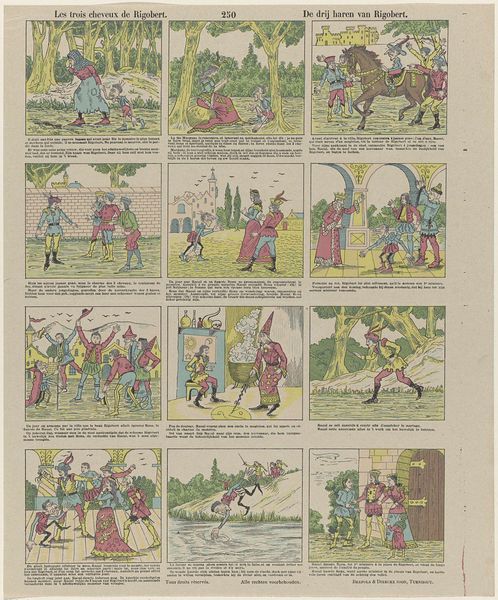
graphic-art, print
#
graphic-art
#
comic strip sketch
#
narrative-art
#
comic strip
# print
#
comic
#
genre-painting
Dimensions: height 400 mm, width 268 mm
Copyright: Rijks Museum: Open Domain
Curator: This piece is titled "Sergeant Durfal," attributed to Monogrammist G.J., dating roughly from 1894 to 1959. It looks like a print, potentially part of a larger publication. What are your initial thoughts? It presents itself as a comic. Editor: It’s interesting – the grid layout reminds me of a comic strip, but the subject matter seems almost satirical in tone. All of the drawings are made with fine lines and in pale shades, and give the overall impression of early newspaper. It's interesting how such a light medium treats the theme of war. What should we look for to interpret it properly? Curator: Let's think about production. These types of inexpensive, mass-produced prints often circulated in newspapers or affordable magazines. Examining the source – its likely role as popular entertainment – reframes our understanding. This shifts our focus from high art's "genius" to the labor and material conditions of image production for broad consumption. Consider the source, the labor and process necessary to generate it, and consider where it would have been consumed. Is there text, is there colorization and what effect is sought for the intended audience? Editor: So, it's less about the artistic intention behind each panel and more about how these images, as multiples, functioned in the broader market. It's not meant as something refined or especially sophisticated, but rather a throwaway comic of some kind, or a one-off product? Curator: Precisely. By analyzing the materials and distribution of "Sergeant Durfal", we gain insight into the social context. The artwork becomes a historical object, tied to specific conditions of labor and consumption. Did this imagery normalize military action or mock the elites? How does the material quality contribute to the message? Editor: Thinking about it as mass culture changes how I perceive it entirely. It feels more like a political commentary than a simple depiction of military life, and certainly a less than subtle satire of society. Curator: Exactly! We begin to see its significance beyond individual artistry.
Comments
No comments
Be the first to comment and join the conversation on the ultimate creative platform.
